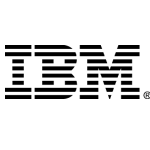Generic
Technology Considerations to Make ITaaS Live Up to Its Promise
18/09/2017 | Written by: Think Blog Editor
Categorized: Generic
Share this post:
IT-as-a-service (ITaaS) was originally based on the idea that the purchase of enterprise technology could be treated as a commodity across all areas: hardware, software and support. Based on this financial perspective, executives imagined that IT could quickly become a completely rationalized and predictable cost that minimized capital investment while providing best-in-breed capabilities. And, as with practically every effort to drive down holistic IT expenses, this perspective has been proven to be too simplistic in a world where apps, digital transformation, big data and mobility are defining the future of business.
Because of this historical perspective, ITaaS is too often defined where the “IT” in ITaaS only means outsourcing the data center as a managed cloud service. But cloud management does not only refer to managing a single vendor for storage and computing infrastructure. From a cloud infrastructure perspective, ITaaS should also mean choosing between public cloud, private cloud and/or on-premises resources based on the business tradeoffs of risk, compliance, governance, performance, initial cost, ongoing total cost of ownership and the ability to support digital transformation. After all, what is the point of having multiple cloud options such as Amazon Web Services, Microsoft Azure, IBM Cloud, Rackspace and other cloud infrastructure players if a company focuses solely on one vendor and ends up creating yet another proprietary technology silo?
And because ITaaS is used by some vendors to mean “outsourced data center,” executives may not be aware that the 2016 version of ITaaS is much more nuanced and aligned to supporting business value-driven IT. The idea that ITaaS only means outsourcing the data center as a manages cloud service may be surprising to anybody in IT who doesn’t manage servers on a day-to-day basis. For instance, IT also includes employees in networking, telecom, database administration, data science, data and application integration, application development, service architecture, business architecture, project management and service desk.
In 2016, Blue Hill believes that CIOs seeking to provide the benefit of ITaaS should focus not only on managed cloud, but also to the following capabilities:
- A service catalog providing multiple options and value-based tradeoffs for IT services that business managers can understand.
- Business user’s ability to adjust IT services to right-size service levels, resources and access based on key business demands, especially for activities where the business has already determined will pay for themselves.
- Potential technical investments in collaboration, service management and possibly even marketing and accounting tools to fully manage ITaaS.
- Compliance, governance and security policies that effectively manage all IT service options being provided to employees
- Taking an agile approach to ITaaS rather than a complete waterfall approach to ITaaS.
In ITaaS, the service catalog should provide competitive options across all infrastructure, platform and software options where the organization seeks to provide self-service and as-a-service access for employees. This catalog should provide business-based comparisons so that IT consumers and P/L (profit and loss) managers can make value-based tradeoffs based on the options that are best for their organizations or departments. The catalog should provide users an appropriate selection of the platforms, applications, development tools, collaboration tools and resources that best fit the user’s needs, including relevant open-source and consumer technologies that often serve as a lingua franca for professionals in specific fields.
ITaaS should also allow business users to order, right-size and align support and service levels to business needs for accurate demand and capacity management. This doesn’t just mean lowering costs and eliminating functionality, but aligning uptime and computing access to the activities that drive revenue and business innovation.
Compare cloud providers. Try de tool >
True ITaaS also requires IT to be run more as a business. This does not just mean managing the Total Cost of Ownership (although a future blog will describe the financial aspects of ITaaS in greater detail). But this means IT capabilities need to be appropriately marketed, managed through IT Service Management and charged back to departments rather than simply treating IT as a shared service. Organizations should also manage IT based on business goals such as revenue processed in a compliant and/or timely manner rather than simply looking at pure technical metrics such as “50,000 transactions per day” or “99.5 percent uptime.”
CIOs need to ensure that compliance, governance and security policies are consistent across all as-a-Service offerings. This may seem simple at first, but the lessons of mobility foreshadow the challenges that can occur across IT. Every IT veteran remembers how the iPhone forced the majority of enterprises to reconsider Bring Your Own Device and often necessitated investments in mobile device management and enterprise mobility management. This trend will spread across IT as the demand for apps such as Github, Slack, LinkedIn, Twitter and Skype — as well as the variety of application development platforms, the proliferation of marketing and sales enablement tools and the rapidly mutating world of big data — make IT oversight more challenging than ever before.
Rather than locking down every single possible application that could be used in the enterprise, Blue Hill recommends using common-sense security and governance policies whenever possible. For instance, if data can be encrypted at the database level, it may not be as necessary to force duplicate encryption capabilities at the application level.
Read IT as a Service for Dummies >

Finally, think of ITaaS as an Agile launch. All of this will not all happen at once, but the executive team who wants ITaaS to provide the financial and digital transformation capabilities that have been hyped isn’t going to get all the benefits unless the firm takes a holistic ITaaS approach. Because piecemeal cloud infrastructure optimization ultimately doesn’t move the financial needle enough to realize the full financial promise of ITaaS, IT needs to take the next step and provide a complete catalog of IT services ranging from cloud and server resources down to smartphones and desk phones (if you still have them!) that can potentially be “aas’ed.” (Can I say that in public?)
By taking these technological steps and understanding that hybrid cloud is an important first step to ITaaS rather than the end goal, businesses can move toward the next stage of realizing the business alignment, financial improvements and ongoing flexibility promised by IT-as-a-service.
Automate work and accelerate business growth
Many companies need help to navigate the rapid changes that define today’s business environment. To improve their responsiveness and flexibility, they are looking for new ways of conducting business, rethinking their processes, and investing in digital transformation projects to increase the robustness of their operations. They rely on business automation technologies to cut out repetitive […]
Sustainability and the technologies enabling the transition
Creating a sustainable future demands significant technological innovation to decarbonize society, restore biodiversity and ecosystem health, foster thriving oceans for sustenance and economic growth, remove atmospheric carbon, transition to sustainable agriculture, and advance eco-friendly cities that align with our vision for a better future. Generative AI has achieved much in recent years and now surpasses […]
Technology in action at Think Summit 2021
Covid 19, the energy transition and climate change require business agility… right away! Organizations that are slowly starting their digital transformation are irrevocably overtaken by competitors: companies that can quickly realize new, sustainable business models with a remote workforce. How can organizations leverage innovations such as AI, machine learning and hybrid cloud to make […]



